Fresh, colorful, delicious produce is a key part of every healthy diet, and it’s great to have a wide variety on hand all the time. This can be tricky to manage, though, if you can only make it to the grocery store or swing by your favorite farmers market once a week or less. So often, delicate fruits and vegetables spoil before we get a chance to eat them – sometimes seemingly within hours! Even if they’re still edible, fruits and veggies can lose taste and nutrition over time.
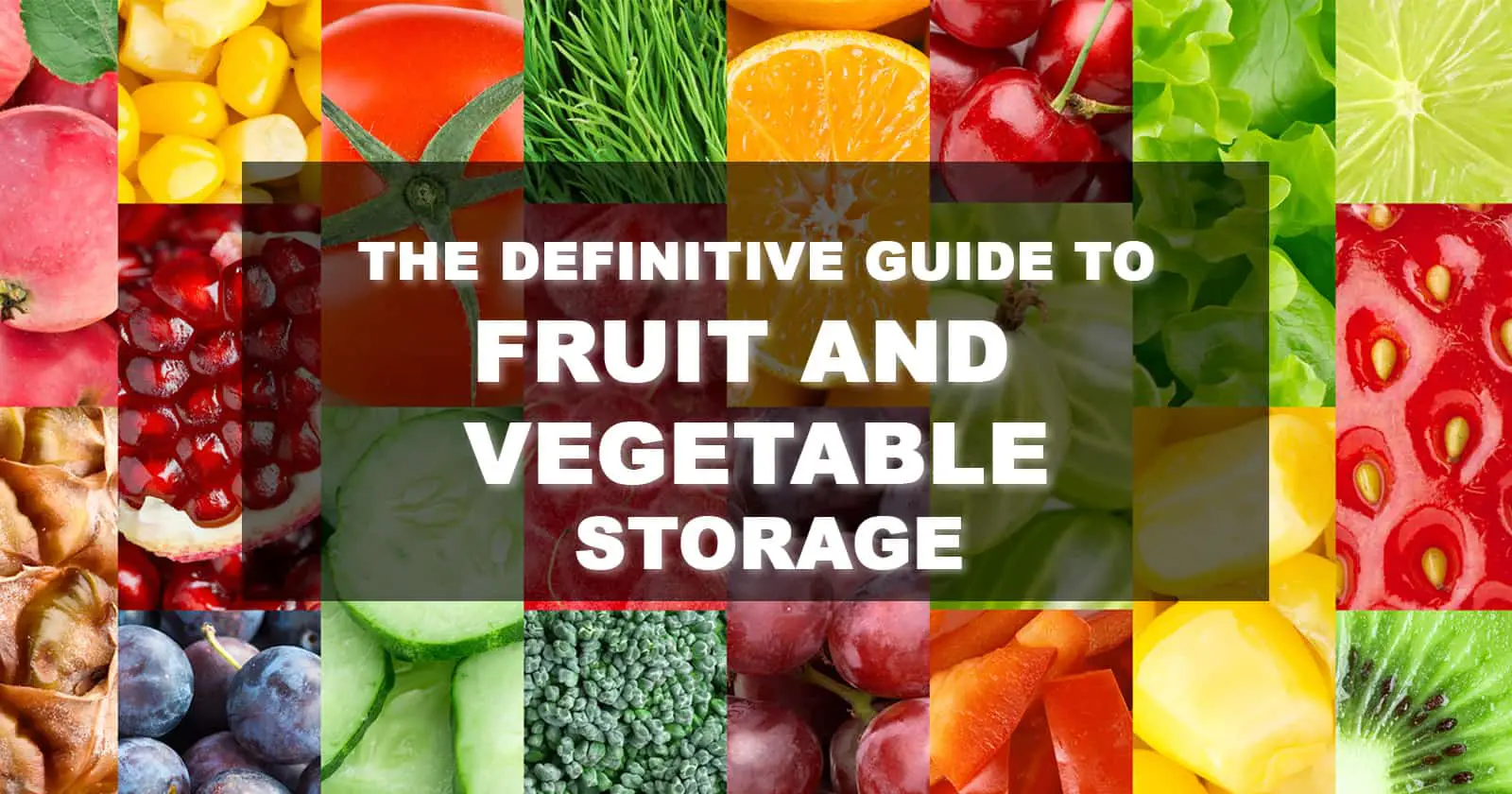
Luckily, you can extend the life of your fresh produce and preserve its quality with proper storage methods. The trick to maximizing freshness is ensuring the ideal conditions for each type. Because of the unique structure and biochemistry of different fruit and vegetables, they require certain temperatures and levels of light and humidity. Some need to be cold and tightly wrapped, others do best at room temperature; some should be cool and in darkness, and some shouldn’t be next to each other. It’s also important to consider whether or not a fruit needs to ripen.
Our handy, easy-to-use guide will tell you everything you need to know about how to store fruits and vegetables. It only takes a few minutes to put everything away where it should be, and it has a big payoff by saving you money and maintaining tastier, healthier produce.
I. General Storage Tips
- Always store fresh fruit and vegetables away from raw meat, fish, and eggs. Cross-contamination can result in serious illness, especially if the produce is consumed raw.
- Don’t stack fruit in multiple layers – fruit at the bottom can get bruised and spoil faster.
- Sort through fruit every few days and remove any that has started to go bad – mold from one piece can easily spread to others if not removed.
- Don’t store fruits and vegetables together. Ethylene, a chemical ripening agent produced by many fruits, can cause vegetables to spoil more quickly.
- More tips, visit the Kitchn’s produce storage guide
II. How to Store Citrus
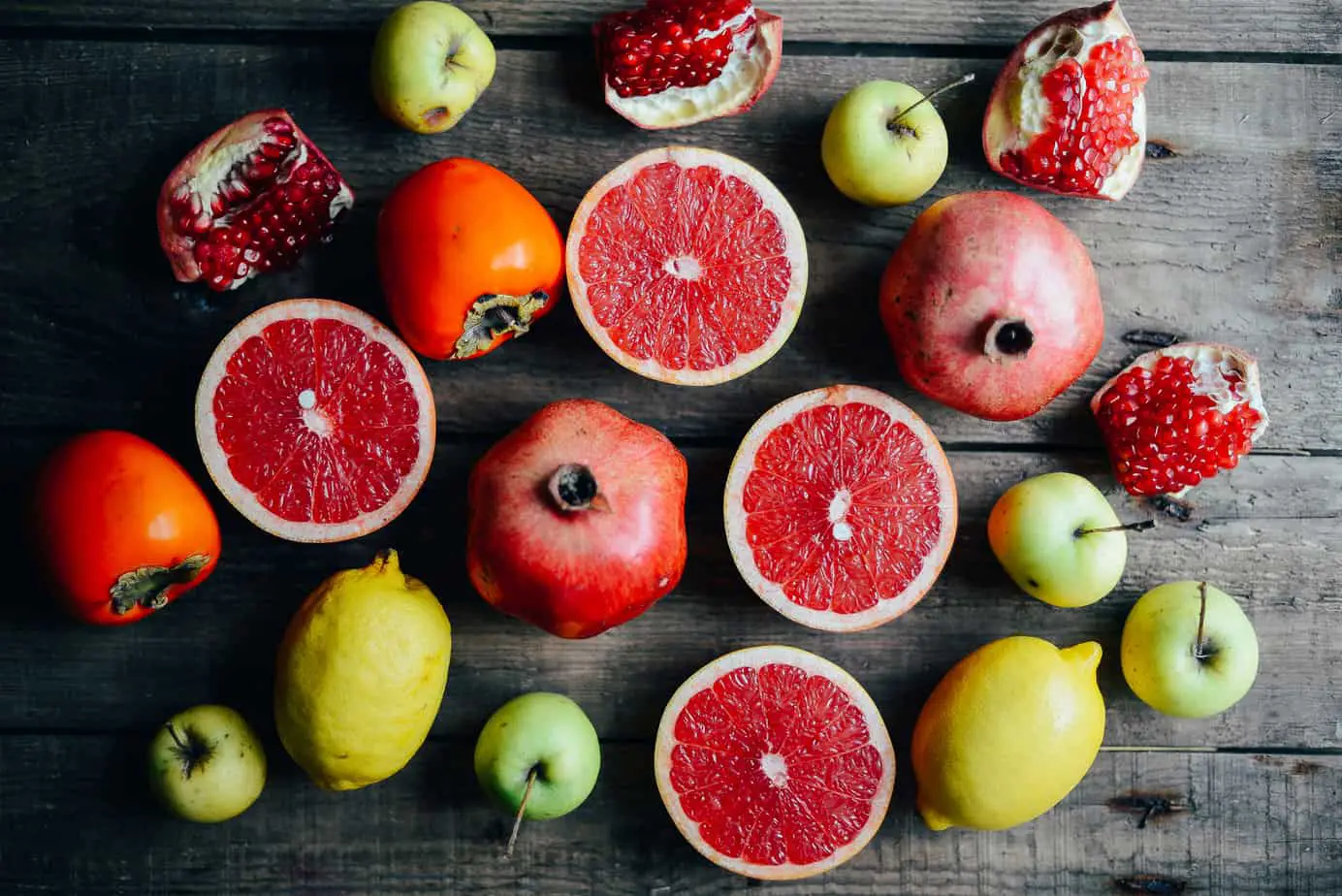
Most citrus fruits are easy to store as their thick peels offer extra protection from bruises, moisture loss, and spoilage. Citrus doesn’t ripen once it has been picked, so that doesn’t need to be taken into consideration when storing them. All types benefit from refrigeration, with slight variations.
1. Oranges and Grapefruit
- The best way to keep oranges and grapefruit is in the crisper drawer of your refrigerator, at temperatures between 38 and 48˚F (3-9˚C) and at 90-95% humidity. They will last at least three weeks, and as much as eight, when stored this way. They can be left on the counter at room temperature, but this shortens their life to about one week. If you plan to eat them within a few days, it’s fine to leave them out.
- If you have lots of oranges or grapefruit and won’t be able to eat them all within this time frame, you can freeze them. The best way to do this is to wash, peel, and section them, place them in glass or plastic freezer-safe containers, and cover with a 40% sugar syrup before freezing. This guide from UC David provides detailed instructions on how to freeze oranges for optimum taste and texture preservation. Alternatively, juice the citrus and pour into a freezer-safe jar, leaving 1 inch of space. Frozen fruit and juice lasts for 10-12 months.
2. Clementines
Clementines are a little bit more delicate than oranges and grapefruits, and therefore don’t usually last as long. Cuties California clementines recommends storing these snack-size citrus fruits in the crisper drawer of the refrigerator. They will last for 2-3 weeks. Because of their very thin peel, clementines can spoil quickly, so they usually last for less than a week at room temperature.
3. Lemons and Limes
Lemons and limes should be stored in the crisper drawer of the fridge, where they will last for 3-4 weeks. To extend their quality by another week or two, store them in a sealed plastic bag to prevent moisture loss. If stored at room temperature, lemons only last about one week; limes may last two. Juice can be frozen in ice cube trays and stored in a freezer-safe plastic bag for convenient later use; frozen juice lasts 10-12 months.
III. How to Store Berries and Other Delicate Fruit
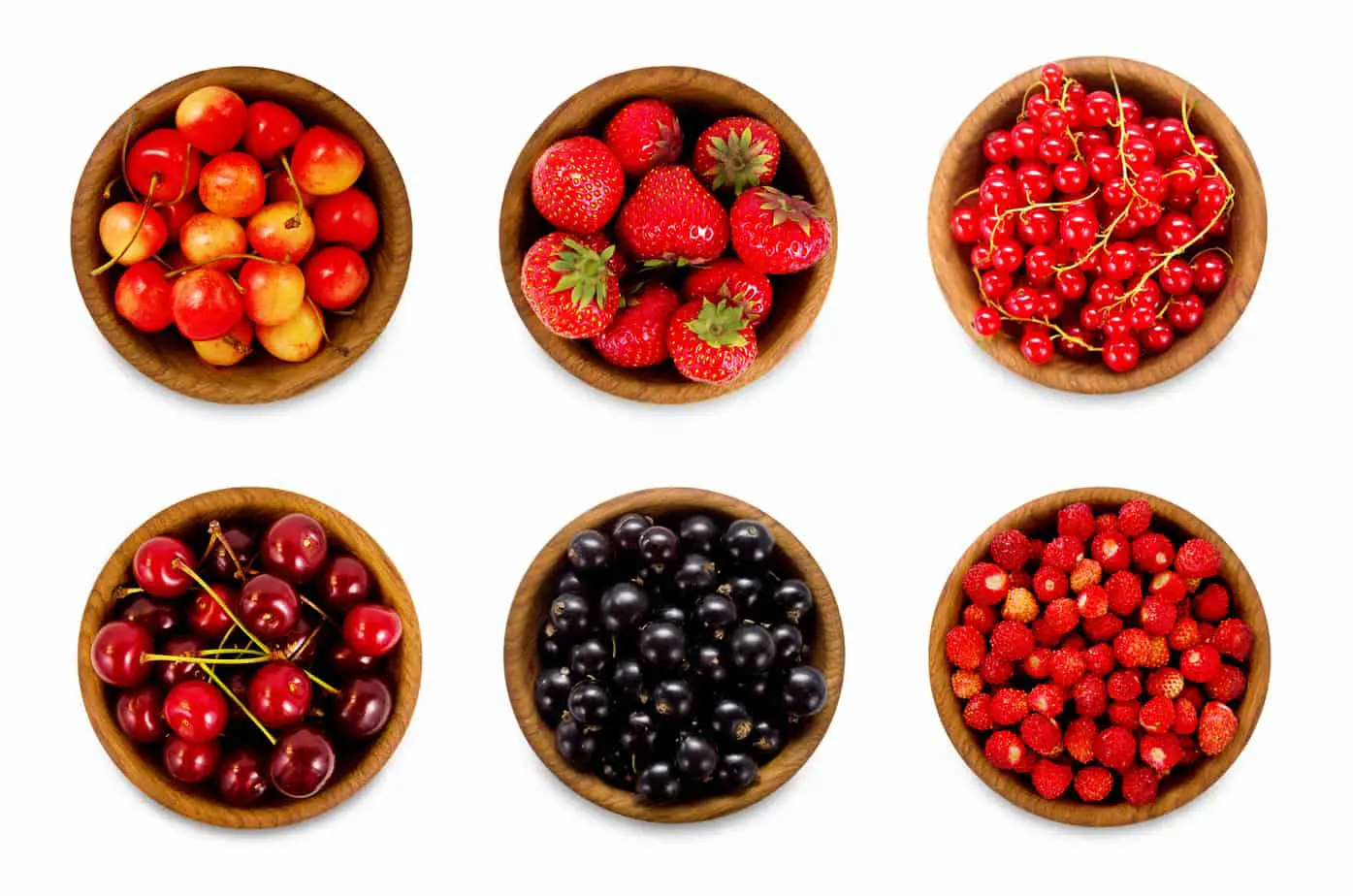
Soft, very-thin skinned fruits like berries, figs, and persimmons spoil quickly and must be handled with care in order to preserve their delicate flavors, textures, and nutrients. Often, these fruits are relatively expensive, so it’s particularly frustrating when they go bad. Avoiding bruising and moisture are key.
1. Berries: Blueberries, strawberries, blackberries & raspberries
- Berries should always be stored in the fridge. Before putting them away, look through and take out any moldy or damaged berries, which will cause the others to spoil more quickly. Don’t wash them until you’re going to eat them as excess moisture can cause them to spoil and mold much more quickly. However, Cook’s Illustrated has developed a brilliant vinegar rinse method that significantly extend the shelf-life of berries. The vinegar helps kill bacteria and mold spores, and prevents the berries from spoiling right away.
- Gently immerse berries in a solution of 1 part white vinegar and 3 parts water. Dry thoroughly (this is key) using a salad spinner lined with paper towels or by patting them with paper towels. Transfer to a sealable plastic container lined with paper towels, leaving the lid open a tiny bit to allow moisture to escape. Store in the fridge. Blueberries and strawberries are a bit more hardy and can last up to a week; raspberries and blackberries tend to last just 3-4 days.
2. Figs
Figs are extremely delicate and spoil quickly. If you are going to eat them the same day, they can be left at room temperature. Otherwise, put them in the fridge right away – they will last 2-4 days with refrigeration. Either way, ensure that they are in a single layer to avoid bruising, and free of surface moisture, which increases spoilage. Check them daily and discard any that shows signs of mushiness, mold, or spoilage. If you’re lucky enough to live somewhere that actually has fresh figs, read Gardening Know-How’s article on harvesting and storing fresh figs.
3. Persimmon
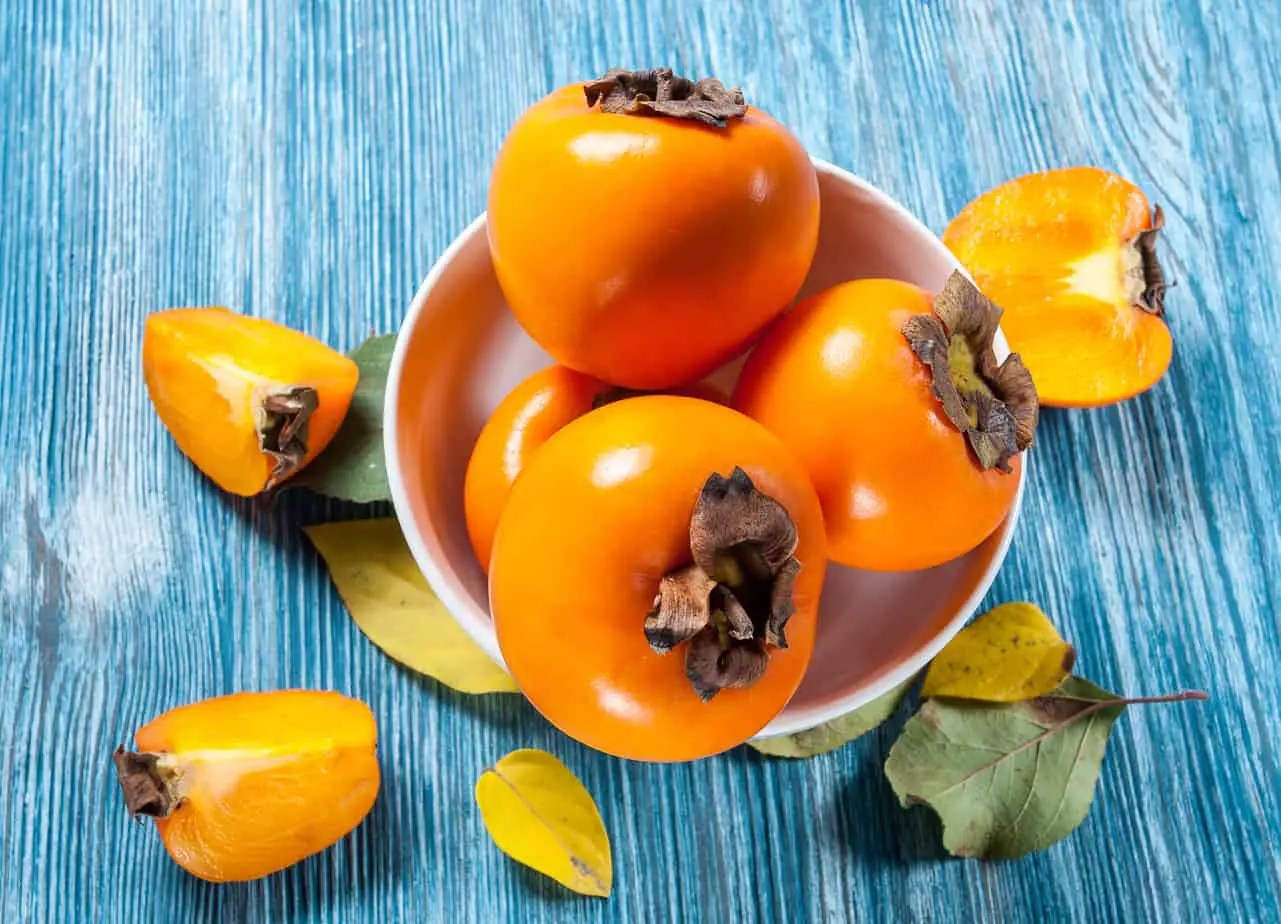
Persimmons are incredibly delicate when ripe, so proper handling and storage is key for preserving them long enough to get a chance to eat them! Most persimmons are picked unripe and need to sit room temperature in order to ripen. Avoid exposure to direct sunlight and moisture. They are ripe when it is very soft – it almost feels like liquid inside! Once ripe, they can be stored for 1-2 days in the fridge, but in general do not store well.
4. Kiwi
Kiwis continue to ripen after picking, so unripe kiwis should be stored on the counter until they are slightly soft but not mushy. They can last another 1-3 days on the counter, but if you want to keep them longer than that, transfer them to the fridge. Ripe kiwi will last 3-5 days in the fridge. If you have very firm unripe kiwi and don’t want to use it right away, you can refrigerate it for up to a month, and leave it at room temperature when you want it to ripen. The California Kiwifruit Commission offers more tips and recipes for using and storing kiwi.
5. Grapes
- The Iowa State Extension service advises that grapes are best stored in the refrigerator, where they will last for 4-5 days. You can leave them in the bag they came in, or wrap them in a paper towel and place them in a perforated plastic bag, or keep them in a paper bag. Don’t wash them until you’re going to eat them – the excess moisture can cause them to get moldy faster. Avoid storing grapes on the counter, as they can actually begin to ferment at room temperature! Leave them out only if you plan to eat them the same day.
- If you have more grapes then you can eat right away, or just want a cool, refreshing summer snack, try frozen grapes. Wash them and pat dry, then freeze in a single layer for 1-2 hours. Eat frozen only – if thawed, they will get mushy.
IV. How to Store Stone Fruits
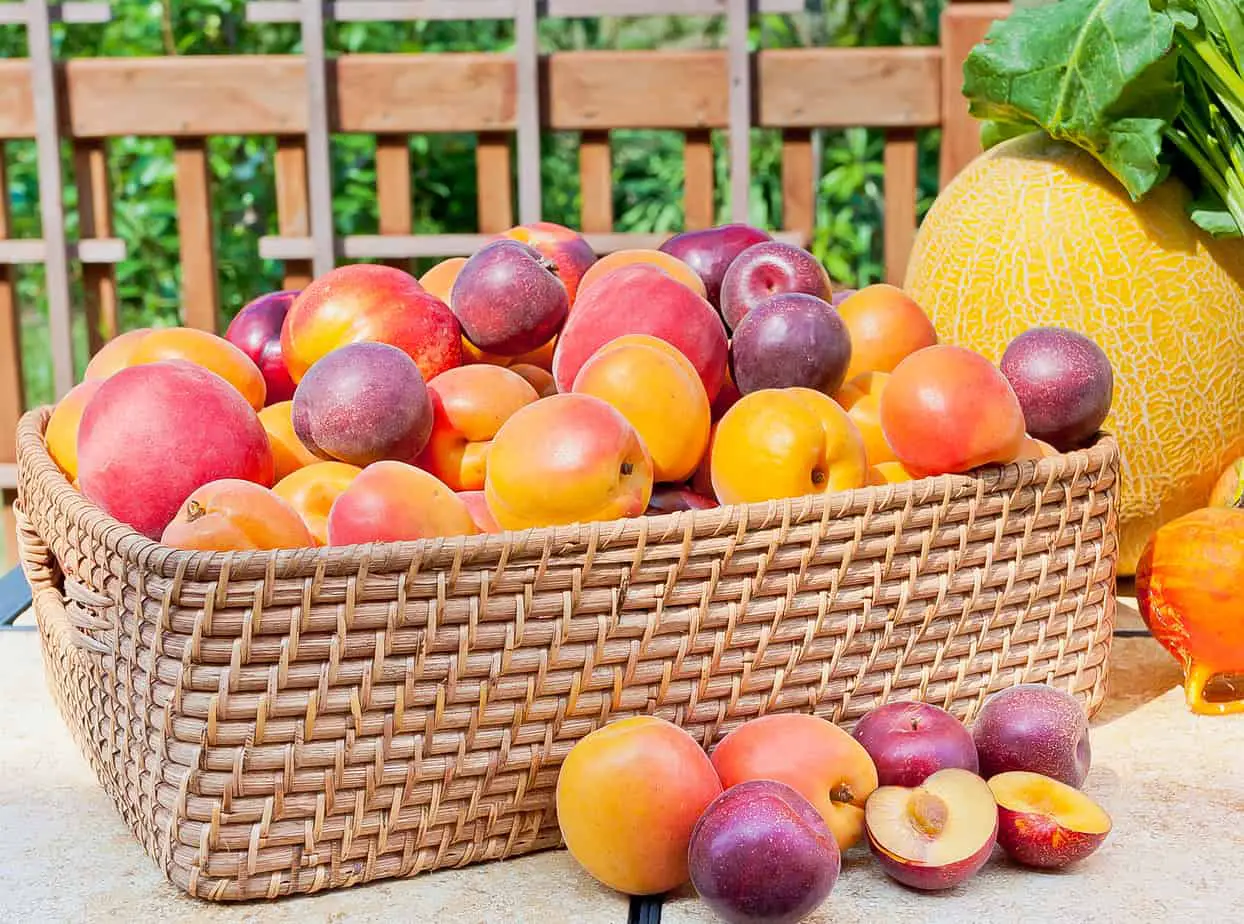
1. Peaches, Nectarines, Plums, and Apricots
- These soft, sweet, and delicious fruits are one of the highlights of the summer. They are often picked unripe and still need to ripen after you have purchased them. Unripe fruit should be left at room temperature, in a single layer with the stem side down, out of direct sunlight, and away from moisture until they are slightly soft and have a sweet, floral aroma. This can take anywhere from 2 to 5 days. To speed up ripening, place in a paper bag and fold down the top. Once ripe, they will last at room temperature for 1-3 days, or you can store them in the fridge for an additional 3-5 days, unwashed, in a plastic bag. Be extra careful with plums, since they have particularly thin, delicate skin. With all stone fruits, keep a very close eye on them as they ripen – they can go from just under ripe to overripe in 24 hours.
- All of these fruits can be frozen for long term storage. If you plan to use them frozen or baked, cut into even wedges and spread out on a baking sheet to freeze, then store in a tightly sealed bag for 10-12 months. If you want to thaw them, it’s best to store them covered with a 40% sugar syrup to reduce taste and texture degradation. Check out this convenient guide for stone fruit storage and ripening from Fresh Direct, and this Seattle Times guide to freezing stone fruits.
2. Cherries
When choosing cherries, look for smooth, unblemished fruit with a moderately firm texture and color that extends throughout the flesh. Avoid ones with wrinkled skin, as this means they have probably sat out for a while. Sort out any bad cherries and put them in the fridge as soon as possible, as they lose quality very quickly at room temperature. You can keep them in the bag they came in, or transfer them to a clean, sealable plastic bag. In the fridge, cherries will last for 10-14 days. They are best washed just before being eaten, since water absorbed at the space where the stem meets the fruit can cause faster spoilage or splitting. You can also freeze them for long-term storage: wash, halve, and pit the fruit, and add ¾ cup sugar per quart of fruit. Mix until sugar dissolves and freeze.
V. How to Store Apples, Pears, and Quince
Apples, pears, and quince are botanically similar fruits, and benefit from similar storage techniques. In general, the fridge is ideal, but most types store quite well in cool cellars, too. These fruits do continue to ripen after bring picked, so they need to be checked periodically for signs of ripeness, including changed color and aroma. This is particularly important for optimum flavor and texture in pears, not as much for apples. If you want more information on the subject of pear, apple, and quince storage, the Royal Horticultural Society offers good tips.
1. Apples
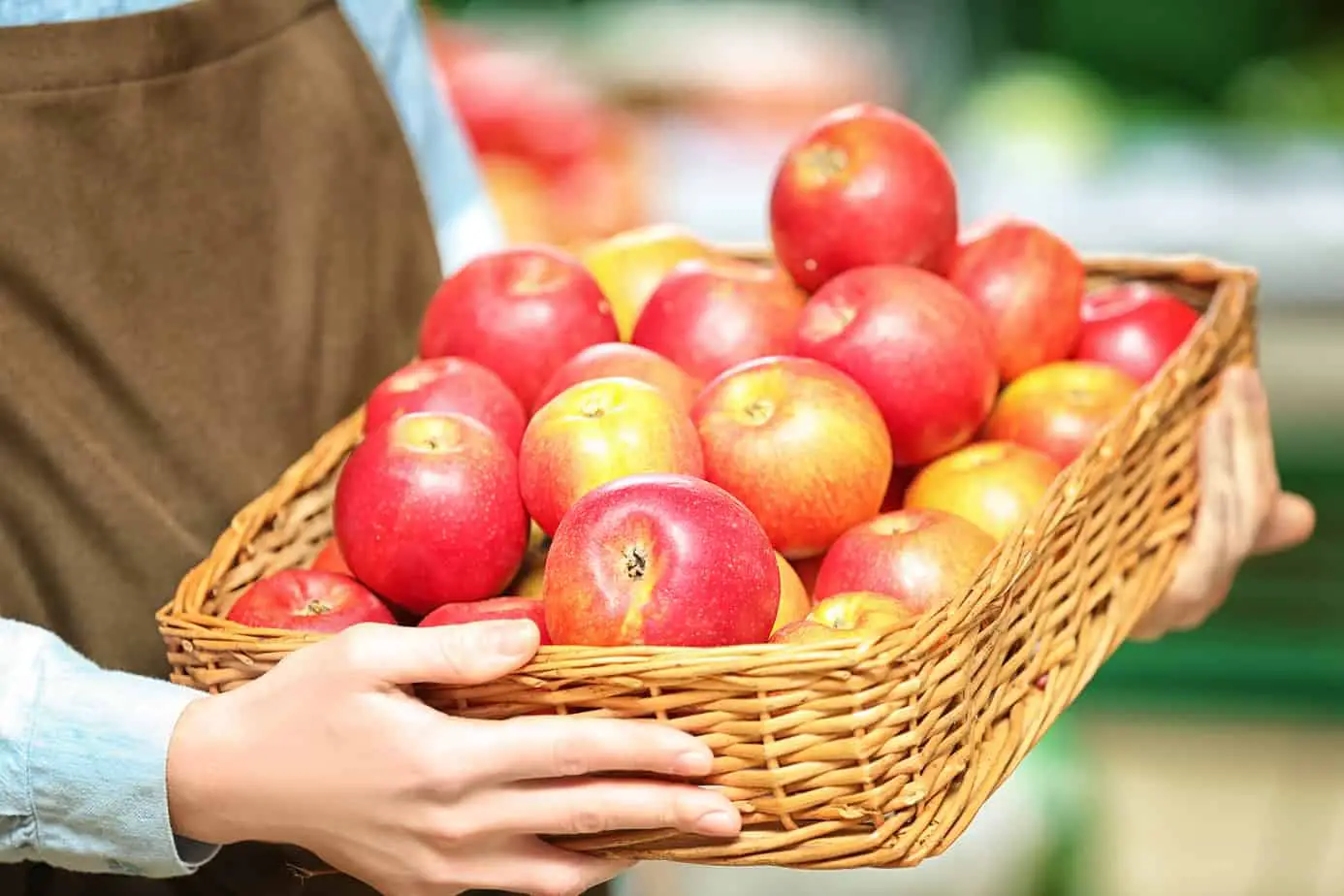
- Apples are a hardy fruit, and if stored properly they can last for months! Storage life varies by type of apple and storage method. Softer apples usually last 4-8 weeks, and harder, later-season apples can last for 3-4 months – sometimes more! As long as they are firm, have a pleasant smell, and are free from any signs of mold or rot, they are good to eat.
- For maximum shelf life, store them in the crisper drawer of the fridge. Temperatures between 30 and 40˚F and high humidity are ideal. You can maximize storage time by putting them in a perforated plastic bag, since moisture loss can cause shrinkage and reduce storage life. Apples also store well in cool basements or other cool, dark locations. Extend the storage life by wrapping each apple in a layer of newspaper and placing them carefully in a single layer on a tray or in a shallow crate. Inspect the apples every few days for signs of rot – one bad apple really does spoil the rest more quickly.
- Apples can be stored briefly at room temperature if other storage space is not available. They will only last 1-2 weeks, though, so this is not ideal.
2. Pears
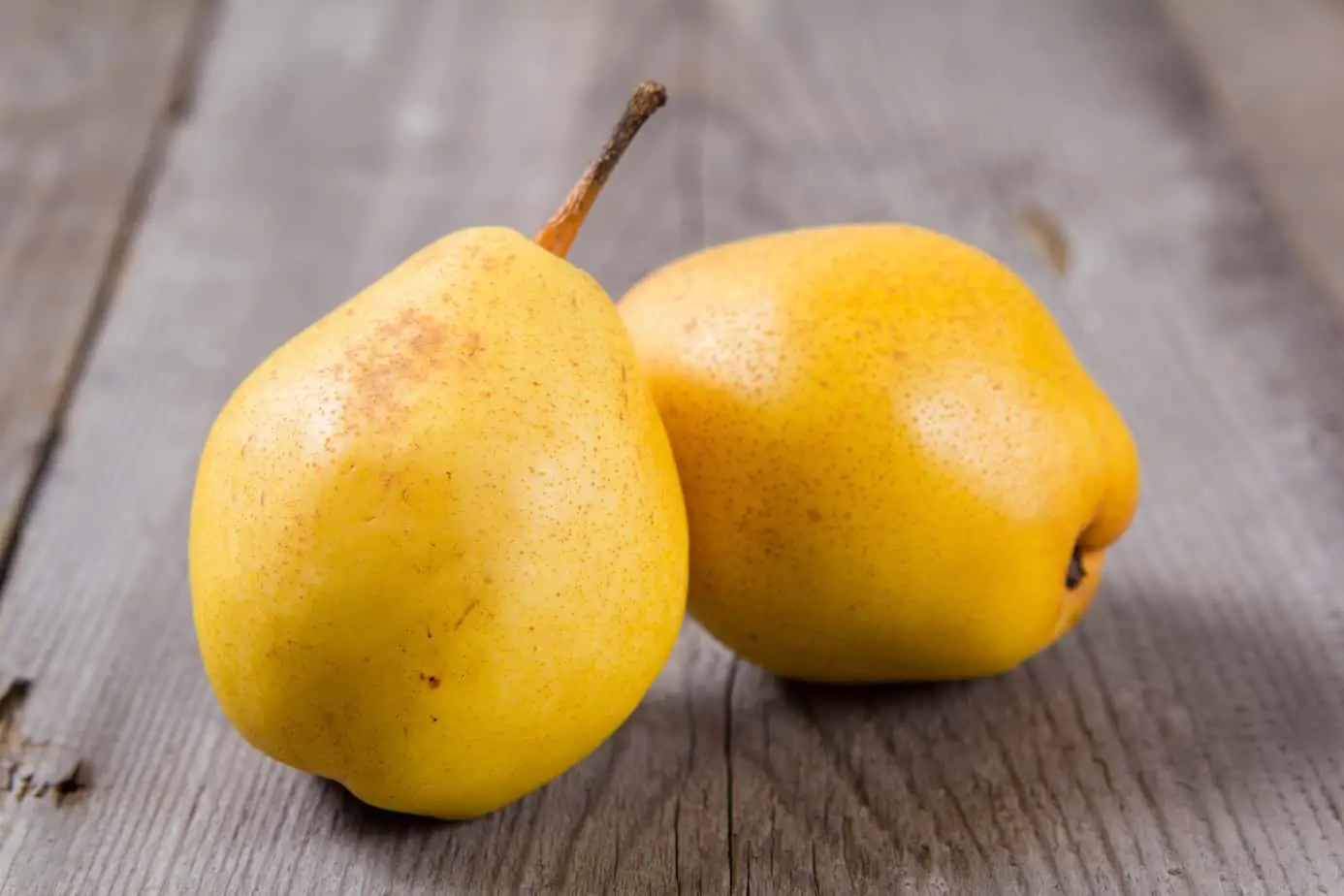
Like apples, pears can last a long time if stored well. Depending on the type of pear, cool storage keeps them good for two weeks to three months. They do best in a slightly cooler environment than apples, so the crisper drawer of the fridge is ideal. Ensure that the air is not too moist, and that there is good airflow. Pears can be stored in a cellar as well, though they won’t last quite as long. Lay them in a single layer to avoid bruising, and check daily as pears can ripen quickly. Ripe pears in cold storage won’t seem as soft, so pay attention to changes in skin color that indicate ripening. You may want to let ripe pears come to room temperature for a day or two before eating for best flavor. Storing pears at room temperature is not ideal since they will last for only 2-4 days after ripening.
3. Quince
Quinces are picked unripe and need to ripen at room temperature. When kept cool, quince lasts about a month. Like apples and pears, they can be kept in the crisper drawer of the fridge, or in a cool, dark, well-ventilated location. Quince are best stored away from other types of fruit, since they have a strong smell that can taint the flavor of other fruits.
VI. How to Store Tropical Fruits
1. Pineapple
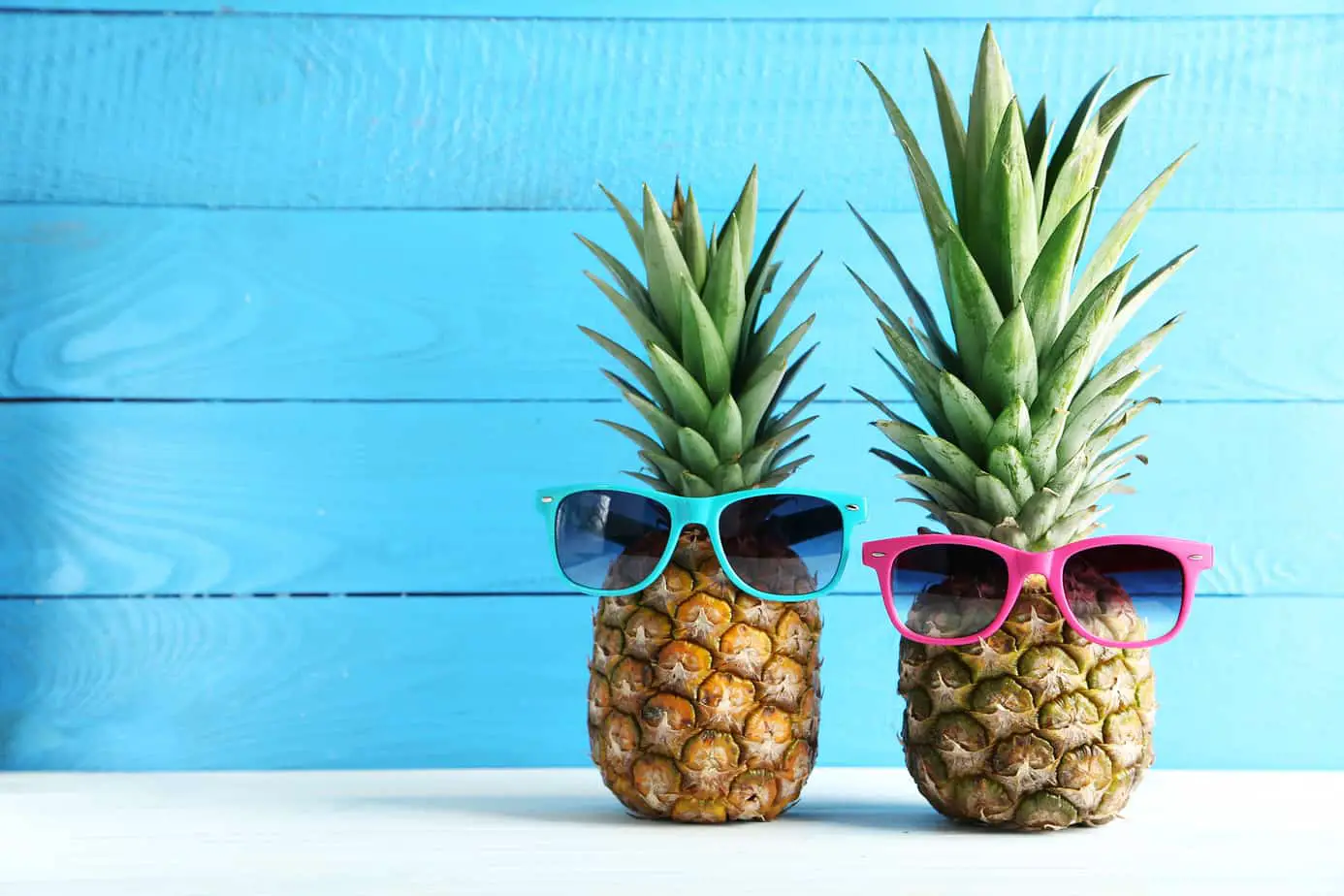
Pure Gold Pineapple provides a good summary of how to store pineapple. They usually need to ripen after purchase, which is best achieved by leaving them at room temperature for several days until they have a pleasant smell and are golden brown in color. At this point, you can either eat it or wrap it in a plastic bag and store it in the fridge for 3-4 more days. Cut pineapple also stores well in the fridge; place it in a sealed plastic container and it will keep for up to six days without losing flavor or nutritional quality. It can be frozen for up to six months, though may suffer some textural changes.
2. Mango
Mangos can be stored similarly to pineapples. They should be left on the counter, in a single layer to avoid bruising, until ripe. To speed up ripening, place them in a paper bag and fold down the top. When ripe, they can be eaten, stored whole in the fridge for up to one week, stored cut for 2-3 days, or stored cut and frozen for 10-12 months. Check out the National Mango Board’s page on mango selection and storage for more info.
3. Bananas
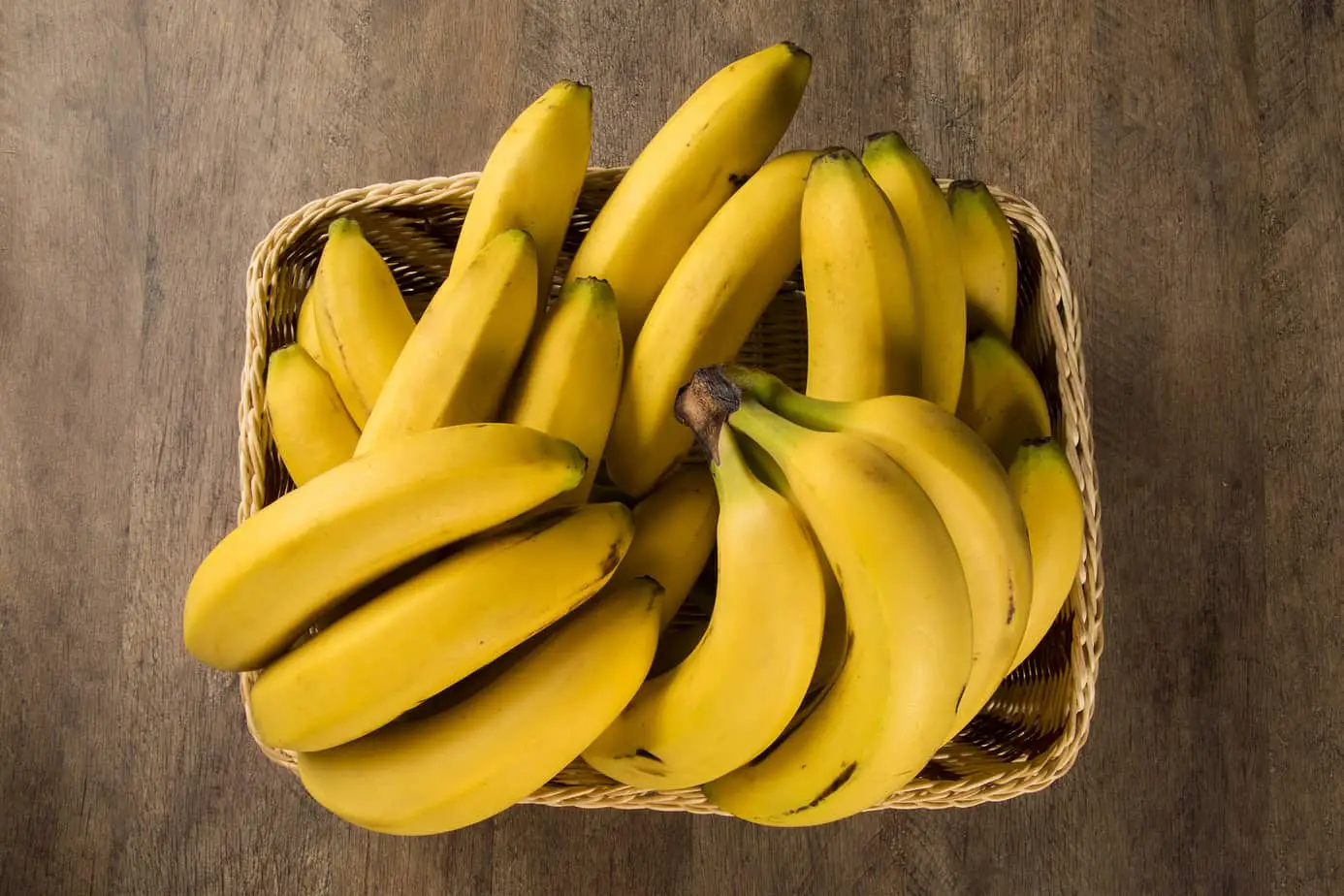
Bananas are also best stored at room temperature, out of direct sunlight, until ripe. Unripe bananas will take between 2 and 5 days to ripen fully; you can speed up this process by putting them in a paper bag and folding down the top. Bananas emit a natural ripening agent, ethylene, in the form of a gas, so they should be stored away from all other fruits and vegetables as this can decrease storage life. Unless you want fruit to ripen fast – then put it in the paper bag with the banana!
Once ripe, bananas can be stored in the fridge for 3-4 days. If you don’t think you’ll be able to eat them all before they go bad, peel them and freeze them in a plastic bag. They can be thawed and used for banana bread or added to smoothies.
VII. How to Store Other Fruits: Melons, Pomegranate, Avocado
1. Melons
Melons like cantaloupe and honeydew continue to ripen after being picked. They should be stored at room temperature out of direct sunlight until ripe, which is indicated by a sweet smell, and a rind that yields to moderate pressure. Once ripe, whole cantaloupe and honeydew melons can be refrigerated for about a week. Once cut, they should be eaten within 3 days. Watermelons do not ripen once picked. Whole, they can be stored in the fridge for 2-3 weeks. Once cut, they last 2-3 days.
2. Avocados

Avocados ripen after being picked, and since they often arrive at the grocery store still rock-hard, this in an important consideration when storing them. If you have a few avocados that you want to eat as soon as possible, it’s fine to store them at room temperature, where the ripening process will go faster. To speed the process up, place a few avocados together in a paper bag and fold down the top. Avocados take anywhere from 2-5 days to ripen at room temperature, and once ripe, will last another day or two. If you don’t want to use ripe avocados right away, gently place them in a sealed plastic bag in the fridge – they’ll last another 3-5 days. To slow down the ripening process, put them in the fridge, and put them back on the counter when you want them to ripen. This can add an extra 1-2 weeks of storage life.
To store cut fruit, sprinkle with lemon juice or white vinegar, then wrap tightly in plastic wrap and store in an air-tight container in the fridge. Cut avocados last 1-2 days. If you want to read more about choosing, storing, and using avocados, the California Avocado Commission offers lots of information.
3. Pomegranates
Pomegranates don’t ripen after being picked, and keep well at cool temperatures. Stored in the crisper drawer or in a paper bag in the fridge, they can last 2-3 weeks. The peel may start to look dried out, but this doesn’t necessarily mean the fruit is bad unless there are mushy spots, discoloration of the fruit, or mold.
VIII. How to Store Colorful Veggies
1. Tomatoes
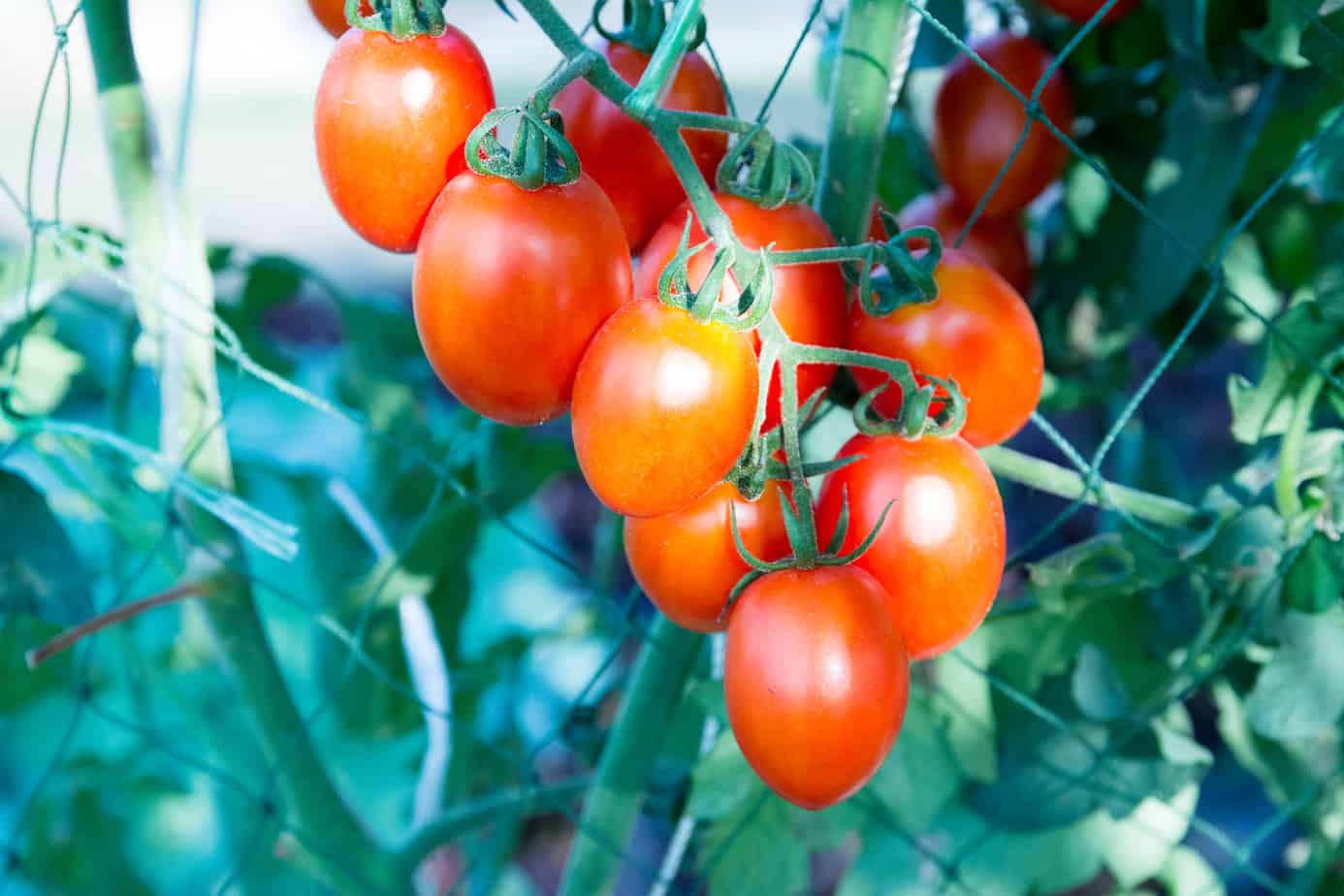
Tomatoes are technically a fruit, and the behave like them in terms of ripening and storage. Leave tomatoes at room temperature until they are ripe, 1-5 days depending on how unripe they were when you bought them. Once ripe, they can be left at room temperature for 2-3 more days, or kept in the fridge for 3-5 days. Never store tomatoes in a plastic bag, as this promotes spoilage. To speed up ripening, store in a paper bag with an apple or banana. Read this article from Food52 for details on exactly what to do with unripe and ripe tomatoes.
2. Peppers, Eggplant
Peppers and eggplant, both members of the nightshade family, should be stored in cool locations with moderate humidity, so keep them in the crisper drawers of the fridge. They are best stored in plastic bags with holes for ventilation – many peppers come packed in this type of bag. They should not be washed before storing, since moisture encourages rot. Both should last for 1-2 weeks when stored this way, though quality generally starts to decline after 4-5 days: peppers can get wrinkly, and eggplants may start to get bitter, so try to use them up within a week.
3. Sweet Corn
Sweet corn is really best eaten as soon as possible after picking. The longer it sits, the less sweet and tender it will be. If you buy it and plan to use it the same day, it’s fine to leave it out. Otherwise, store it in a paper bag in the fridge for 1-3 days.
4. Zucchini
Zucchini should be stored unwashed in a perforated plastic bag in the fridge, preferably in the crisper drawer. They will last 3-5 days. For suggestions on buying, storing, and using these colorful veggies, see Real Simple magazine’s guide to summer produce
IX. How to Store Green Vegetables
1. How to Store Leafy Greens
These ultra-delicate veggies, including lettuce, spinach, watercress, arugula, chard, beet greens, and more, need to be keep as cool and as humid as possible. If you bought a bunch with the roots still attached, wrap the roots in a damp paper towel and keep it in a plastic bag in the crisper drawer. Greens stored this way can last 2-4 days. If the leaves are already cut, store them in a plastic bag in the crisper drawer for 1-3 days. Do not wash greens before storing. Bagged greens can be stored in any very cool part of the fridge, and you should follow the expiration date on the package. If you’re trying to get in the habit of eating more leafy greens, read 7DayVegan’s comprehensive guide to buying, storing, and cooking with them.
2. Cabbage (Red and White)
Look for cabbage that has some of the thick outer leaves intact, as this will help protect the more delicate inner leaves from spoiling or drying out. Do not wash before storing. Whole cabbage should be kept in the crisper drawer of the fridge. It can be wrapped in a perforated plastic bag to preserve moisture. It should last at least two weeks and sometimes up to two months! Once cut, cabbage should be wrapped tightly with plastic wrap and kept in the fridge for 2-3 more days
3. Broccoli and Cauliflower
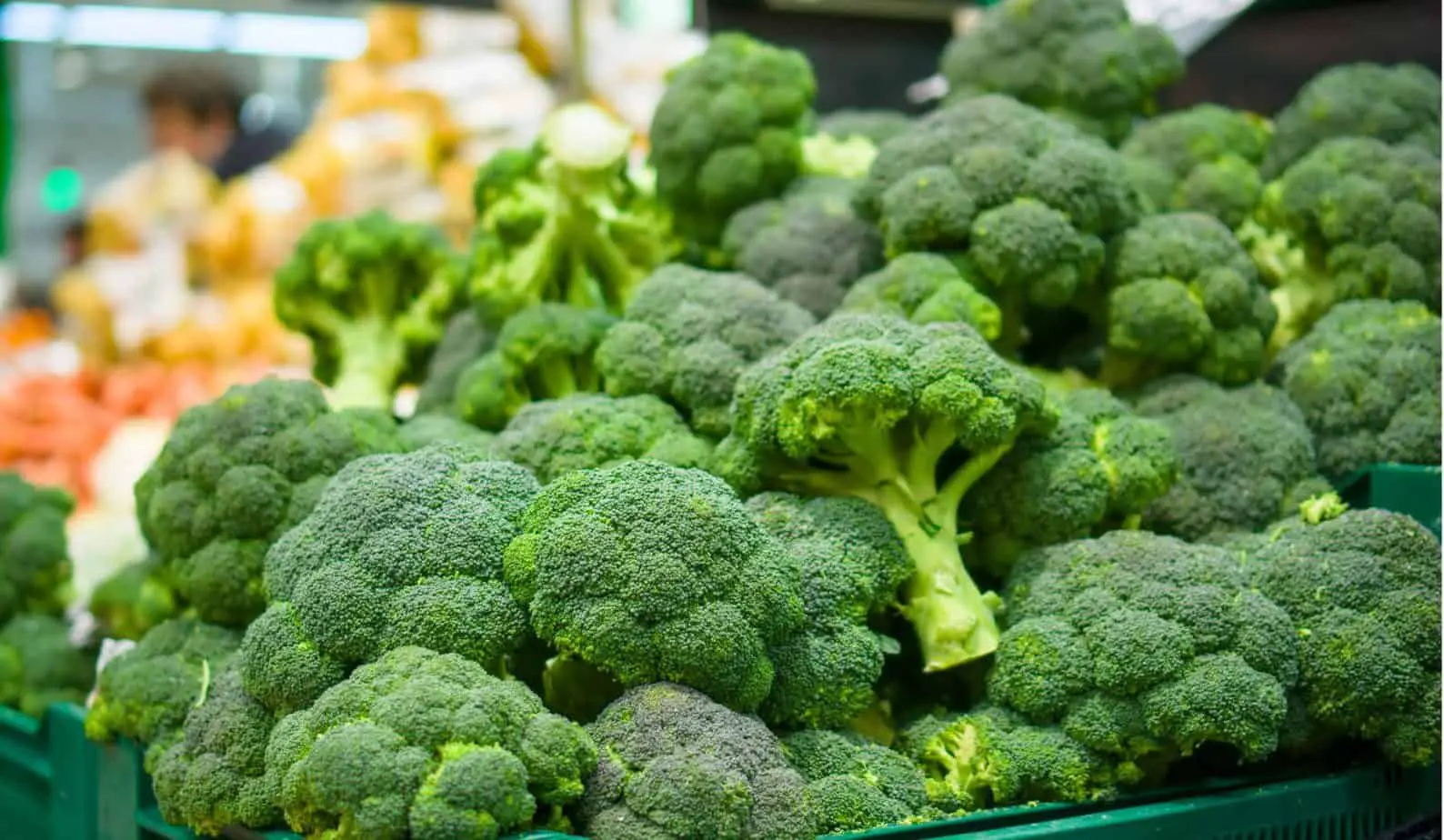
Broccoli and cauliflower should be stored in the fridge and eaten relatively soon after purchase. To maximize their storage life, remove the original packaging as soon as possible and place them in a loosely sealed plastic bag with a paper towel to absorb excess moisture. You do not need to wash before storing. Stored this way, they should last for 3-4 days. To prolong the storage life of a stalk of broccoli, you can set it in a bowl of water like a bouquet of flowers and cover it loosely with a plastic bag. This method will keep it fresh for up to a week.
4. Asparagus
The writers of WikiHow and dozens of blogs agree on the best way to keep asparagus good for up to two weeks. Trim the ends by ½ – 1 inch and place the bunch upright in a jar filled with 1-2 inches of cool water. Cover loosely with a plastic bag and keep in the fridge. Change the water every day or so. You can also store the asparagus in the crisper drawer of your fridge in a perforated plastic bag, but it may only last 2-4 days.
5. Cucumbers
Cucumbers are best kept at temperatures around 40˚F – the warmer end of the fridge range. As a result, it’s best not to keep them in the crisper or at the back of the fridge, but on a shelf near the front. Store in a plastic bag. If the cucumber came in plastic shrink-wrap, leave it on until you are ready to use the cucumber. Cucumbers will last 3-4 days in the fridge.
6. Celery
Celery should be stored in the crisper drawer of the fridge. Cook’s Illustrated recommends wrapping whole bunches of celery with aluminum foil, because it helps keep moisture in but allows spoilage-including ethylene gas to escape. Stored this way, celery can keep up to a month. After extensive tests, TipBusters recommended wrapping it in a paper towel in a perforated plastic bag in the crisper drawer – it should last 3-4 weeks.
X. How to Store Onions, Shallots, and Garlic
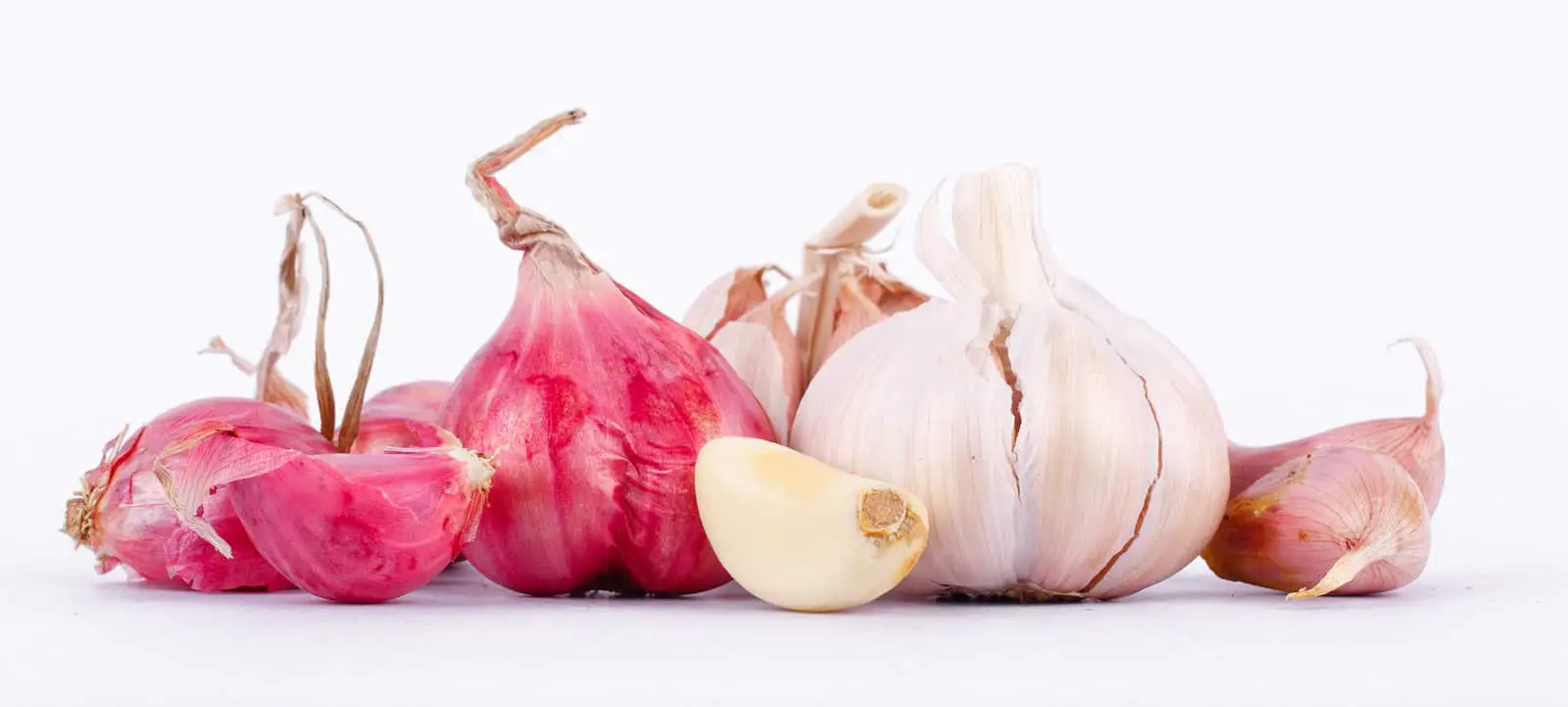
1. Onions and Shallots
- Onions and shallots are best stored in cool, dark places with good ventilation, such as in a cupboard in a wire mesh basket, or in the basement in a cardboard box with holes. For longest possible storage, put them in a paper bag with several holes punch in the sides, which allows for just enough air circulation. Kept this way, shallots last for one to two months and onions usually last at least three and as much as six! You can store these veggies in the fridge as well, but it’s not ideal as the cold can soften the texture and reduce storage life. However, the fridge is the best option if you live in a hot, humid, climate and don’t have a cool place to store them. It’s also best for certain types of mild, sweet onions with a high water content, because they can spoil faster. Never store them in plastic bags – this traps moisture and will lead to molding and spoilage. It’s also important not to store them near potatoes – they give off gases that make each other spoil faster.
- Whole peeled onions and shallots can be stored in the fridge for up to two weeks. Cut onions and shallots should be stored in a sealed container for up to seven days. For more detailed instructions on storing onions, garlic, and shallots in paper bags to maximize storage life, look at this guide from The Yummy Life. The National Onion Association also offers great info on how to cut and store onions.
2. Garlic
Whole heads of garlic can be stored like onions and shallots – in a cool, dark, and well-ventilated place. It’s actually best not to store it in the fridge, as this encourages sprouting. It should also never be stored in plastic bags or in any other humid location. Storage life is shortened once the head is broken up into cloves. At this point, it’s ok to put unpeeled garlic in the driest part of the fridge. Try to use it within ten days. Peeled or chopped cloves should be put in airtight containers and used within 2-3 days for best flavor. If you have a lot of garlic, freeze it. Whole cloves of peeled garlic be frozen and kept in the freezer for 8-12 months. Check out The Kitchn’s guide to storing garlic for more ideas.
XI. How to Store Squash, Potatoes and Root Vegetables
1. Carrots, Parsnips, Rutabaga, Turnip, Radish, Beets
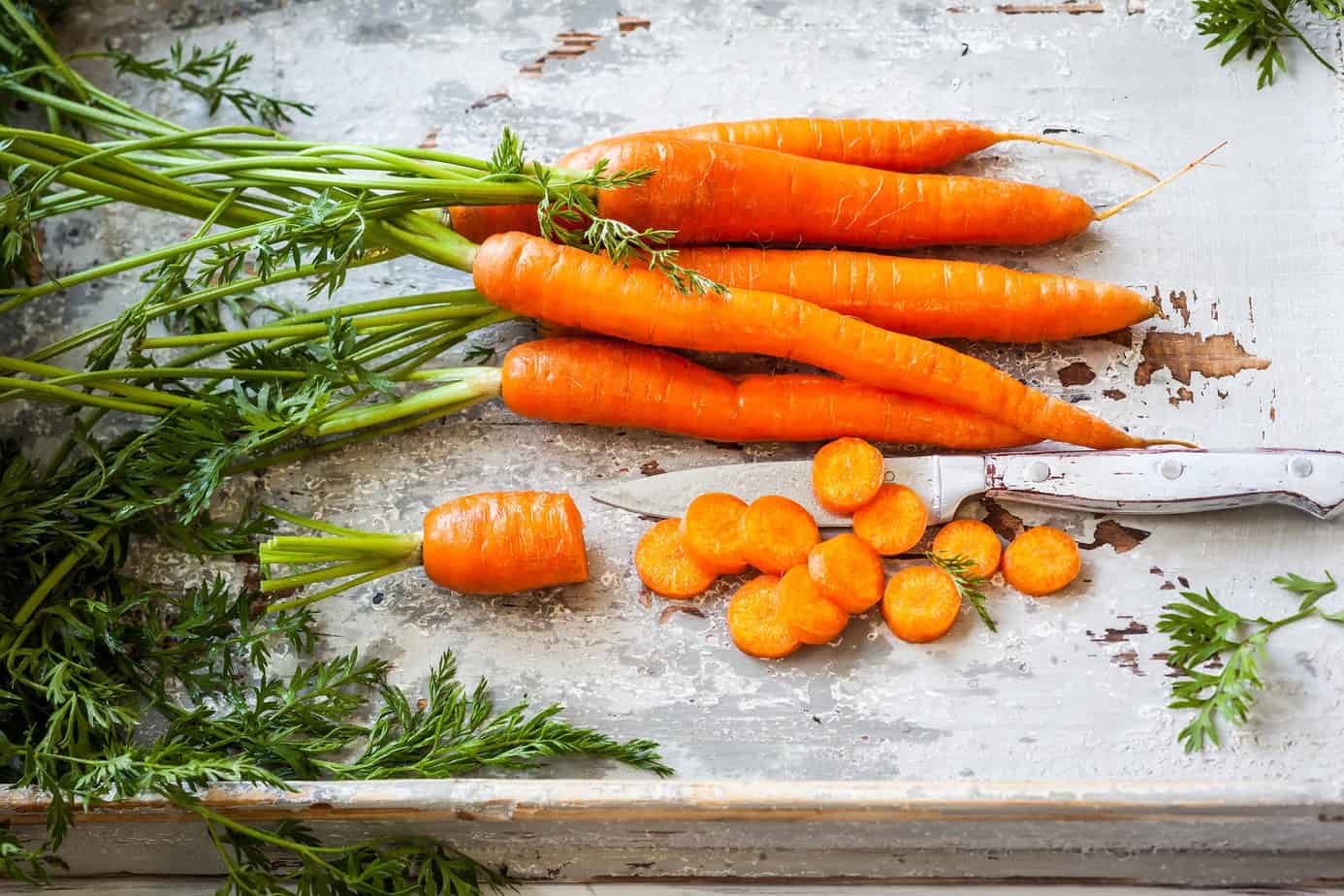
Root vegetables including carrots, parsnips, rutabagas, turnips, radishes, and beets should be stored in a cool, dark place, such as the fridge or a very cool basement. Ideal storage conditions are 32-40˚F and 95% humidity, so the crisper drawer of the fridge is best. Before storing, gently wash off any dirt (if there is a lot) and allow to dry thoroughly. Cut tops, if attached, to ½ inch. You can also trim long taproots, but avoid doing this to beets as they can bleed red juice. Then, root vegetables can be wrapped in a paper towel and placed in a plastic bag in the fridge. They should last for at least two weeks, sometimes 3-4. Visit the Royal Horticultural Society’s page on Root Vegetable Storage for more information on storing root vegetables that you grew yourself.
2. Potatoes, Sweet Potatoes and Yams
Potatoes, sweet potatoes and yams should be stored in a cool, dark place (50-60˚F) with good ventilation, such as a tray or a cardboard box with holes. They will last about 1 month. Avoid storing them in the fridge, as this can alter the taste and texture. Also avoid storing potatoes near other fruits and vegetables, and they give off gases that can make other produce spoil faster.
3. Winter Squash and Pumpkins
- The storage life of pumpkins and winter squash depends in large part on the type. Acorn squash lasts 1-2 months, butternut and most pumpkins last 2-3, Hubbard, banana, and buttercup last 3-6, and Sweet Meat squash can last 4-6. All types should be stored in cool, but not cold locations, free from moisture and with good air circulation. Ideal temperatures are in the 50-55˚F range. If stored below that, the quality deteriorates rapidly. Similarly, squash and pumpkins that have been exposed to freezing temperatures will spoil quickly. Don’t store squash and pumpkins near apples, bananas, or other ripening fruit, as the ethylene they produce can cause the squash to yellow and reduce its storage life.
- Since many winter squash are very hard, they can be stacked in 2-3 layers, as long as there is still good air circulation. Check periodically to ensure that the surface is free from moisture, mold, or other signs of decay, and discard any that have begun to spoil Oregon State University Extension service provides good storage advice for winter squash and pumpkins, as well as instructions on how to harvest and cure homegrown squash.
4. Ginger
Technically a rhizome, ginger should be stored in the fridge in a sealed plastic bag. It should last for 3-4 weeks. You can also mince or chop ginger and freeze it in zip-lock bags for adding to soups and stews.
